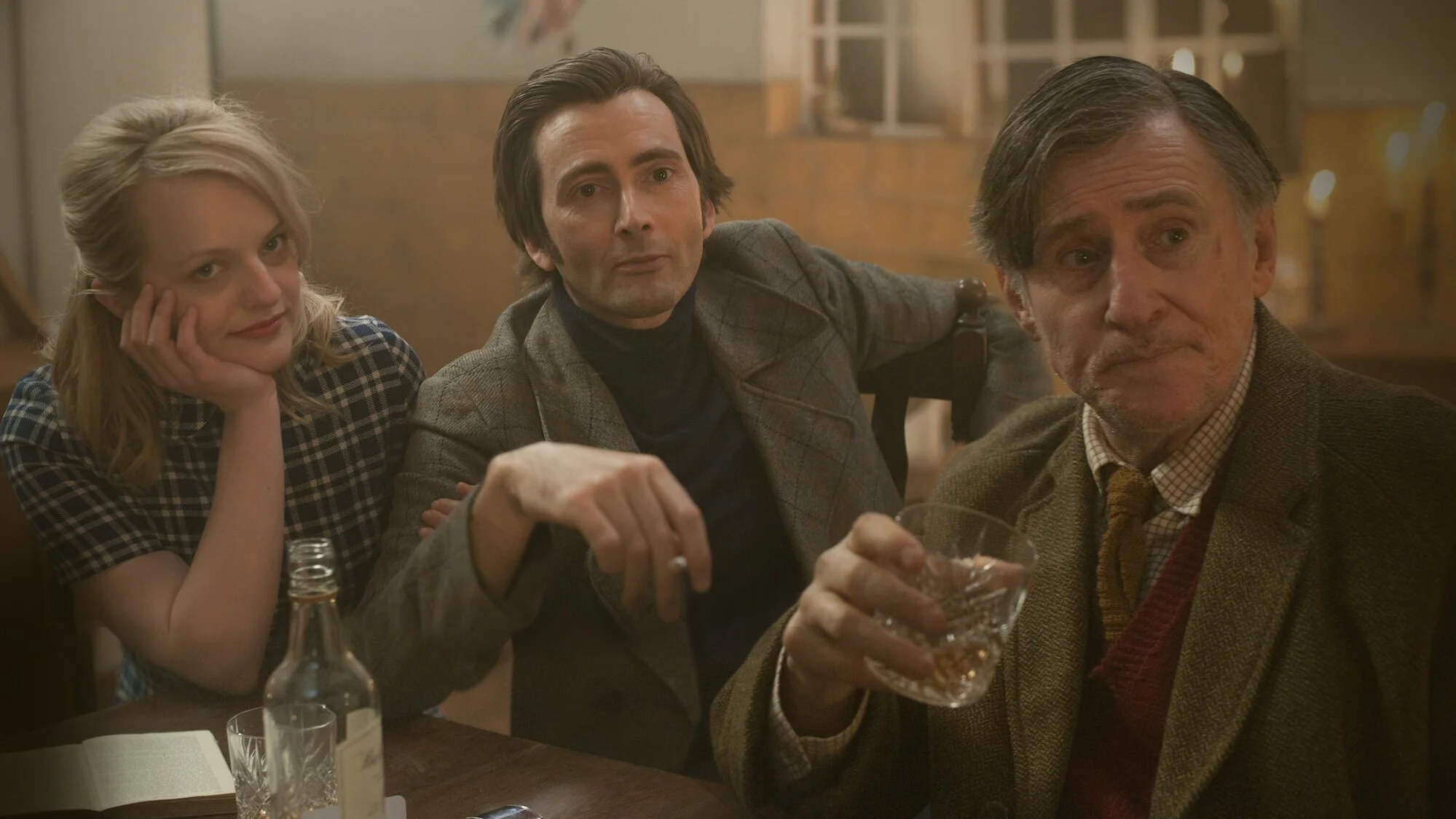Mad to Be Normal
Fact and fiction combine disturbingly in a very well acted film.
Elisabeth Moss, David Tennant and Gabriel Byrne
Robert Mullan started out by making documentary films but, having long been fascinated by the unorthodox Scottish psychiatrist R. D. Laing, he has now unexpectedly chosen to make a film about him using actors - in addition to being the director he is co-author of the screenplay. Although Laing would live from 1927 to 1989, Mullan has elected to set Mad to be Normal in the period when Laing was a headline figure. This was the 1960s when, opposing shock treatment for schizophrenics as approved by the medical establishment, he set up his own alternative. This involved handling a number of such cases in Kingsley Hall in London's East End where he and his staff lived alongside them. Laing rejected the use of medication even declining to prescribe tranquillisers and would instead listen patiently thus reaching out to the afflicted through conversations he regarded as therapeutic.
The humanity behind his approach appeals, but the patients could become dangerous and there were those who found no credibility in Laing's claims for his theories. He famously declared that madness need not be all breakdown but could also be a break-through and he wrote about his views in such books as The Divided Self. His readiness to see harm in parental pressures and his lenient attitude to LSD were further aspects that helped to make him a famous anti-establishment figure of the 1960s.
Laing is indeed a fascinating man but, ironically given Mullan's background, this film leaves one with the impression that a more effective approach to him on film would have been to make a documentary offering a modern take on his ideas and extending to both approval and disapproval in assessing his ideas. Mad to be Normal doesn't really come down on either side as it points to both the merits and the disturbing drawbacks that can be found in Laing's system of working. That results in a rather episodic piece portraying various patients who are shown from time to time, but the film does enable David Tennant to bring Laing to life in a mannered but utterly persuasive manner. It's a great performance.
Rather oddly the film begins with an emphatic statement that any resemblance to any living persons is coincidental and from that one assumes that the patients portrayed are representative rather than actual individuals. Nevertheless, the wording used did not prevent me from being shocked after the screening when I discovered that the film's second main character, Laing's American lover and a woman by whom he had a child (a role admirably played by Elisabeth Moss), is fictional. She seems central to the story as told here. Consequently, despite the interesting material and much fine acting (the support offered by Gabriel Byrne and Michael Gambon is as good as one would expect), we are left asking far too many questions - not just about Laing but about Mullan too.
MANSEL STIMPSON
Cast: David Tennant, Elisabeth Moss, Gabriel Byrne, Michael Gambon, David Bamber, Olivia Poulet, Jerome Holder, Lydia Orange, Tom Richards, Adam Paul Harvey.
Dir Robert Mullan, Pro Phin Glynn, Alan Latham and Charlotte Arden, Screenplay Robert Mullan and Tracy Moreton, Ph Ali Asad, Pro Des Celina Norris, Ed Laurie Yule, Music Laurie Yule, Costumes Lance Milligan.
GPS Studios International/Gizmo Films/Bad Penny/LipSync Productions-GSP Distribution.
105 mins. UK. 2016. Rel: 6 April 2017. Cert. 15.


